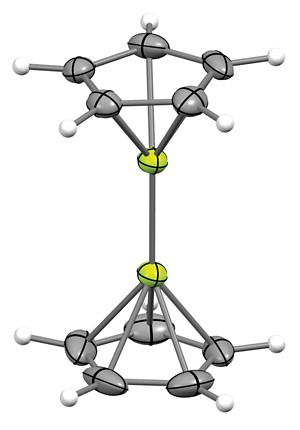In the field of scientific research, X-ray crystallography plays a vital role in unlocking the mysteries behind the structure of molecules. It allows scientists to visualize the arrangement of atoms in a crystal, providing valuable insights into various fields such as chemistry, biology, and materials science. This article delves into the fascinating world of X-ray crystallography and discusses its applications and significance in scientific discoveries.
1. Introduction to X-ray crystallography as a powerful technique for unraveling structural insights
As a scientist, I have always been fascinated by the field of X-ray crystallography and its ability to provide valuable insights into the structure of molecules. X-ray crystallography is a powerful technique that allows us to determine the three-dimensional arrangement of atoms within a crystal. By shining X-rays onto a crystal and analyzing the resulting diffraction pattern, we can uncover crucial information about the arrangement and bonding of atoms in a molecule. This technique has been instrumental in numerous scientific discoveries, from understanding the structure of DNA to designing new drugs. In this article, we will explore the basics of X-ray crystallography and its importance in our quest for knowledge in the field of structural biology.
2. Principles behind X-ray crystallography and how it works

X-ray crystallography is a powerful technique used to determine the atomic and molecular structure of a crystal. The principles behind this technique lie in the interaction between X-rays and the crystal lattice. When X-rays are directed towards a crystal, they are diffracted by the regularly spaced atoms within the crystal lattice. This diffraction pattern can be detected and analyzed to deduce the arrangement and positions of the atoms in the crystal. In order to obtain a crystal suitable for X-ray crystallography, a pure sample of the substance must be grown into a crystal form. This process requires careful control of factors such as temperature and concentration. Once a suitable crystal is obtained, it is mounted on a specialized device and exposed to X-rays. The resulting diffraction pattern is then collected and processed using mathematical algorithms to reconstruct the three-dimensional structure of the crystal. X-ray crystallography has become an indispensable tool in various fields including chemistry, biochemistry, and materials science, enabling researchers to gain valuable insights into the structure and function of molecules and materials at the atomic level.
3. Advancements in X-ray crystallography techniques and methodologies
In my years as a researcher in the field of X-ray crystallography, I have witnessed remarkable advancements in techniques and methodologies. X-ray crystallography has played a crucial role in determining the atomic and molecular structures of various substances, shedding light on their properties and behaviors. The introduction of more advanced X-ray sources, such as synchrotrons, has significantly improved the resolution and quality of data obtained from crystallographic experiments. Additionally, the development of automated data collection and analysis software has expedited the process of structure determination, allowing for a more efficient and streamlined workflow. These advancements have not only enhanced our understanding of the physical and chemical world but have also opened up new possibilities for applications in drug discovery, material science, and other fields of research.
4. Examples of groundbreaking discoveries made using X-ray crystallography
Throughout history, X-ray crystallography has played a crucial role in unlocking the secrets of the molecular world. One remarkable breakthrough that was made using this technique was the discovery of the double helix structure of DNA by Rosalind Franklin and Maurice Wilkins. Their groundbreaking work revolutionized our understanding of genetics and paved the way for the modern field of molecular biology. Another significant achievement facilitated by X-ray crystallography was the determination of the atomic structure of the ribosome, the complex molecular machine responsible for protein synthesis. This monumental discovery, made by Ada Yonath and her team, earned her the Nobel Prize in Chemistry in 2009. These examples highlight the transformative power of X-ray crystallography in unraveling the intricacies of the microscopic world and shaping our understanding of life itself.
5. Limitations and challenges in X-ray crystallography and alternative techniques
In my experience as a crystallographer, I have encountered several limitations and challenges when using X-ray crystallography as a technique. One of the primary challenges is obtaining high-quality crystals suitable for analysis. Sometimes, it can take months or even years to grow crystals of sufficient size and quality. Additionally, crystal radiation damage during data collection is another limitation. The intense X-ray radiation used can cause the crystals to deteriorate, limiting the accuracy of the obtained structure. Furthermore, some compounds may not crystallize at all, making X-ray crystallography impossible to use. As a result, alternative techniques such as electron crystallography and neutron diffraction have gained popularity in recent years to overcome these limitations and challenges.
6. Future prospects and potential applications of X-ray crystallography in various scientific fields
In my opinion, the future prospects of X-ray crystallography in various scientific fields are extremely promising. With advancements in technology and the increasing availability of high-resolution X-ray sources, this technique will continue to be a powerful tool for studying the structures of molecules. In the field of chemistry, X-ray crystallography can provide valuable insights into the arrangement of atoms within a crystal, aiding in the design of new drugs and materials. Furthermore, in the field of biology, this technique can help unravel the complex structures of proteins and other biological macromolecules, leading to a better understanding of their functions and potential therapeutic targets. Additionally, X-ray crystallography can also be applied in the field of materials science, allowing for the analysis of the atomic and molecular structures of various materials, thus enabling the development of improved and more efficient materials for applications in electronics, energy, and more. Overall, the potential applications of X-ray crystallography are vast, making it an indispensable tool for scientific research and discovery in the years to come.
Conclusion
In conclusion, X-ray crystallography is a powerful technique that has revolutionized the field of structural biology. By providing detailed information about the arrangement of atoms in molecules, it has allowed scientists to better understand the functioning of proteins and other biomolecules. As technology continues to advance, it is likely that X-ray crystallography will continue to play a crucial role in unraveling the mysteries of the molecular world.
What is X-ray Crystallography?
X-ray crystallography is a scientific technique used to determine the arrangement of atoms within a crystal. By analyzing the diffraction patterns produced when X-rays pass through a crystal, scientists can obtain valuable information about the structure and composition of the crystal.
How does X-ray Crystallography work?
X-ray crystallography works by directing a beam of X-rays at a crystal and measuring the resulting diffraction pattern. The X-rays interact with the electrons in the crystal, causing them to scatter. This scattering pattern is then captured on a detector and used to calculate the positions of the atoms within the crystal.
What are the applications of X-ray Crystallography?
X-ray crystallography has a wide range of applications in various fields including chemistry, biology, materials science, and pharmaceuticals. It is used to determine the structures of proteins, nucleic acids, small organic molecules, and inorganic compounds.
What are the advantages of X-ray Crystallography?
One of the main advantages of X-ray crystallography is its ability to provide atomic-level details of the crystal structure. It allows scientists to understand the three-dimensional arrangement of atoms, which is crucial for studying molecular interactions and designing new drugs. Additionally, X-ray crystallography is non-destructive, meaning the crystal can be used for further analysis or experiments after data collection.
Are there any limitations to X-ray Crystallography?
Yes, X-ray crystallography has a few limitations. It requires the sample to form a crystalline structure, which can be challenging for certain molecules. Additionally, large or complex structures may be difficult to analyze due to computational limitations. In some cases, alternative techniques such as electron microscopy or nuclear magnetic resonance spectroscopy may be more suitable for structural analysis.
How has X-ray Crystallography contributed to scientific discoveries?
X-ray crystallography has played a crucial role in numerous scientific discoveries. It has helped scientists understand the structure and function of important molecules such as DNA, enzymes, and pharmaceutical drugs. By revealing the atomic details of these molecules, X-ray crystallography has paved the way for advancements in medicine, materials science, and

